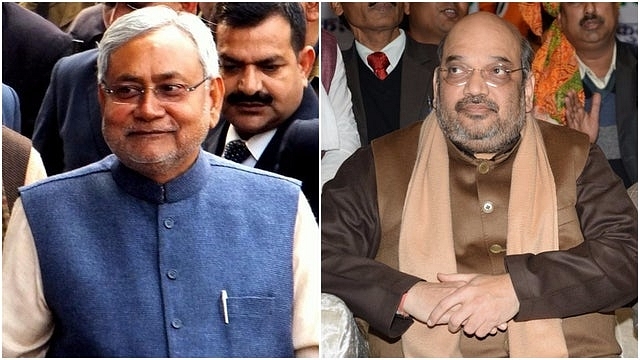Insta
How NDA’s Number Game In Rajya Sabha Has Changed After JDU’s Addition

Nitish Kumar and Amit Shah
Nitish Kumar is back in the National Democratic Alliance (NDA) after four years of dalliance with Lalu Prasad Yadav’s Rashtriya Janata Dal (RJD) and the Congress party. This political homecoming of the Bihar Chief Minister is a win-win for the Bharatiya Janata Party (BJP). Not only the party gets to be in the government in Bihar, JDU’s addition swells the NDA’s tally in the Rajya Sabha, a very important and needed development for the alliance.
JDU has 10 Rajya Sabha members which takes the current tally of NDA in the upper house to 84. Apart from these, the BJP can count on three additional votes from nominated members the President has appointed on its suggestions.
Though Congress (57 seats) and the BJP (57 seats) are equal in total number of seats in the Rajya Sabha, when alliance numbers are tallied, NDA with 85 (+3 nominated) seats is now well ahead of the United Progressive Alliance’s (UPA) 64 (+5 nominated assuming all those appointed under the UPA regime vote for it).
All India Anna Dravida Munnetra Kazhagam (AIADMK ), Biju Janata Dal (BJD), Telangana Rashtra Samithi (TRS ), YSR Congress Party have 13, 8, 3 and 1 seats respectively. These parties are not averse to voting in favour of NDA’s bills and have supported the alliance on many occasions including in the recently concluded Presidential polls. However, as BJP’s electoral ambitions expand in Odisha and Telangana, support from parties like BJD and TRS would be difficult to garner. Even if we include these members into NDA’s tally, it comes to 113 and stops short of the halfway figure of 123 by 10 seats.
JDU addition is an important and much needed relief for the party in the Rajya Sabha, but it will have to wait for a long time before it can claim majority and ram it bills through Parliament at will.
Support Swarajya's 50 Ground Reports Project & Sponsor A Story
Every general election Swarajya does a 50 ground reports project.
Aimed only at serious readers and those who appreciate the nuances of political undercurrents, the project provides a sense of India's electoral landscape. As you know, these reports are produced after considerable investment of travel, time and effort on the ground.
This time too we've kicked off the project in style and have covered over 30 constituencies already. If you're someone who appreciates such work and have enjoyed our coverage please consider sponsoring a ground report for just Rs 2999 to Rs 19,999 - it goes a long way in helping us produce more quality reportage.
You can also back this project by becoming a subscriber for as little as Rs 999 - so do click on this links and choose a plan that suits you and back us.
Click below to contribute.
Latest